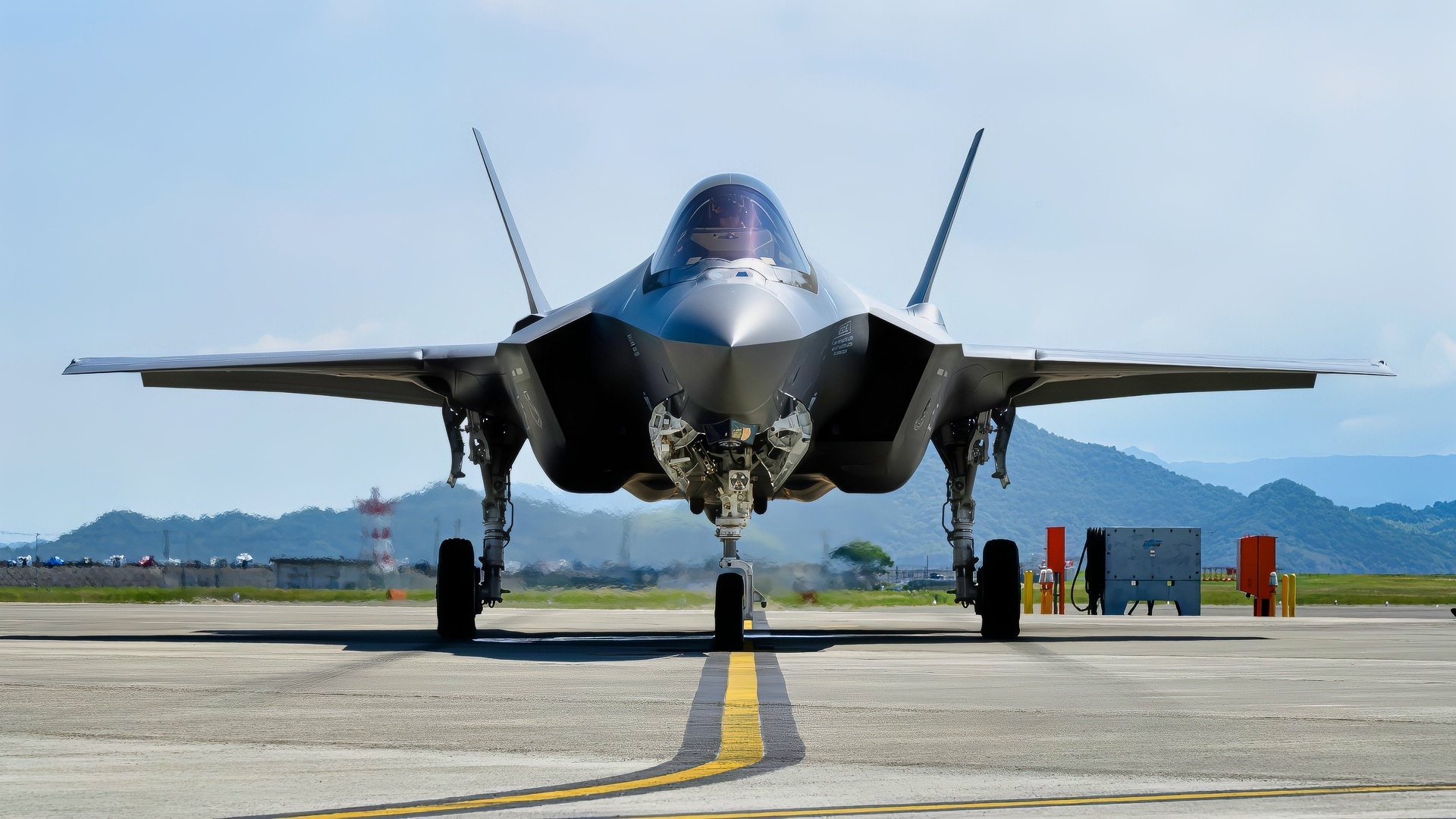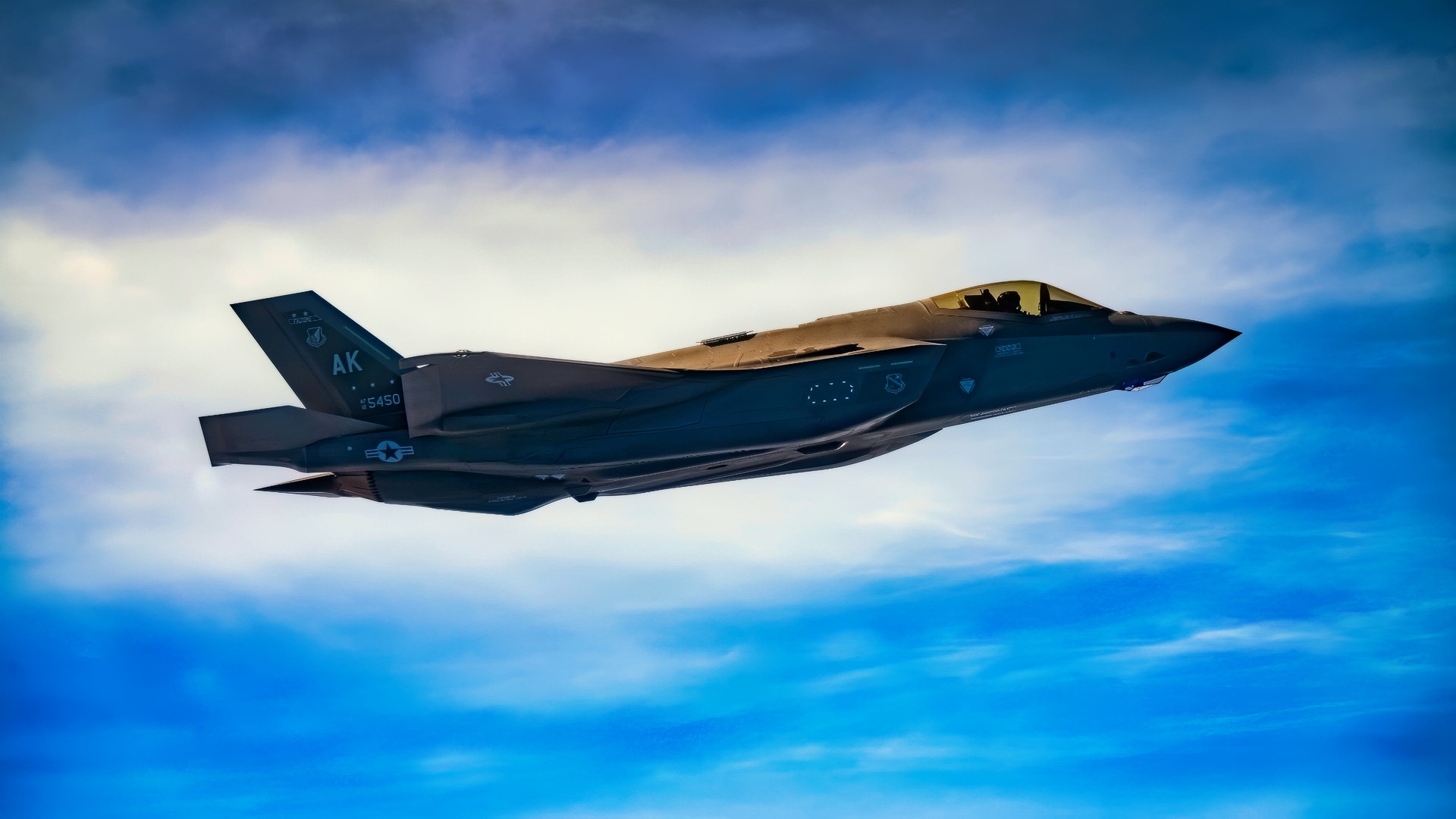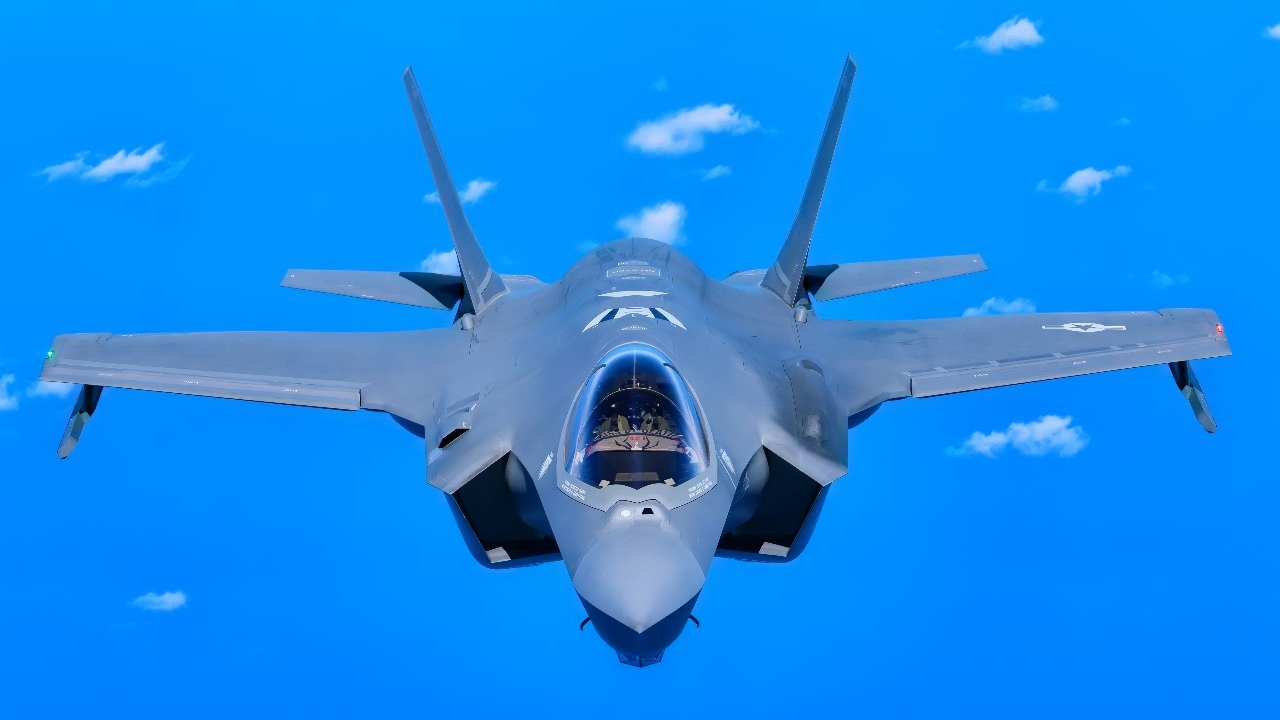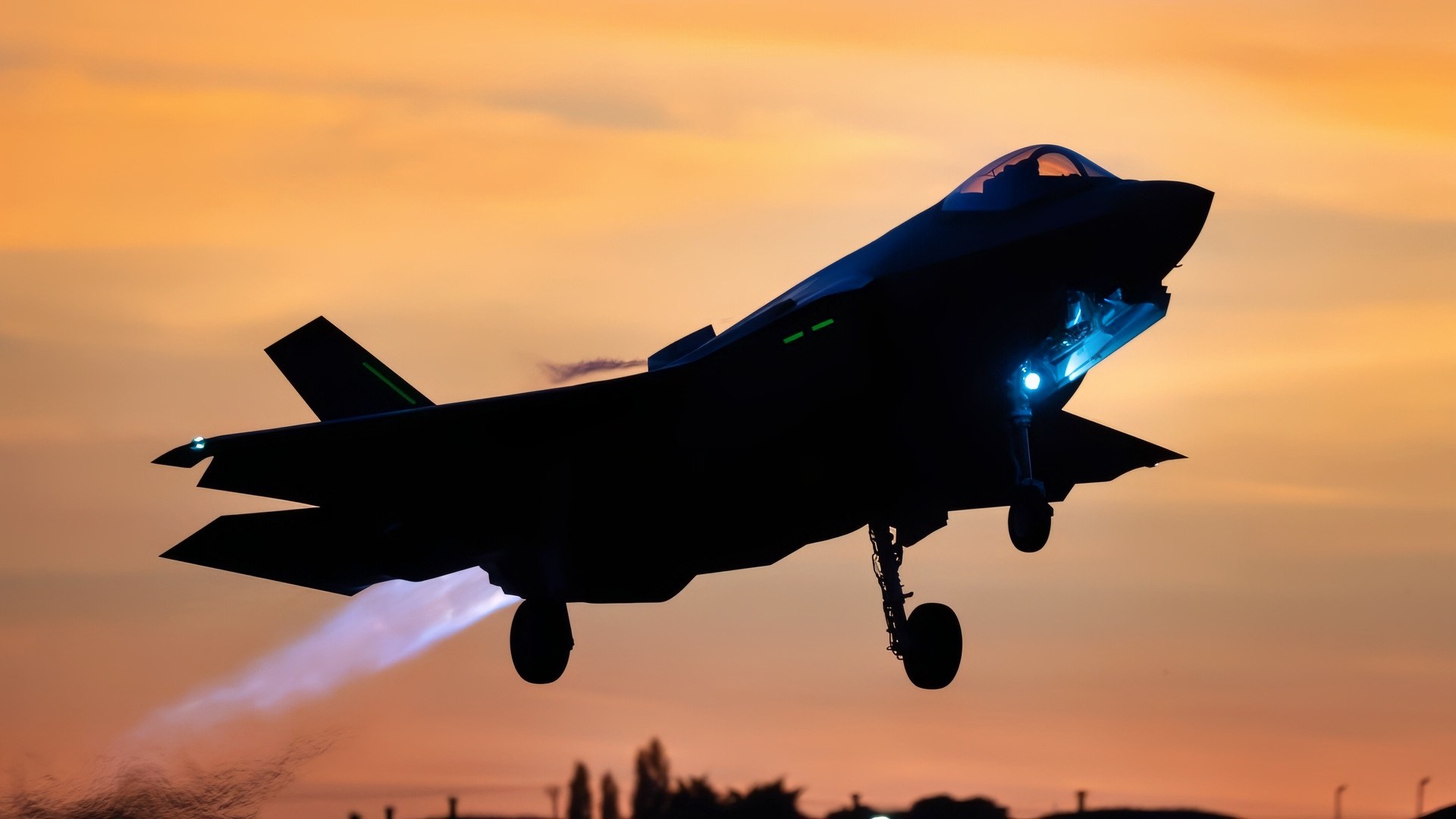Key Points and Summary – Germany has approved the purchase of 15 additional F-35 stealth fighters, augmenting its previous order of 35 jets.
-This €2.5 billion deal reinforces Berlin’s commitment to the American platform, which is needed to replace aging Tornado aircraft and fulfill Germany’s NATO nuclear-sharing role.

A U.S. Air Force F-35A Lightning II assigned to the 356th Expeditionary Fighter Squadron, 354th Air Expeditionary Wing, sits on the flightline during Agile Combat Employment training at Marine Corps Air Station Iwakuni, Japan, June 30, 2022. ACE is Pacific Air Forces’ model to project combat power via a network of distributed operating locations throughout the Indo-Pacific region. (U.S. Air Force photo by Senior Airman Jose Miguel T. Tamondong)
-The decision comes as a surprise amid rising transatlantic tensions fueled by President Trump’s trade policies and growing European concerns about over-reliance on U.S. technology.
-While nations like Spain and Denmark express fears about potential U.S. control or “kill switches” on exported jets, Germany ultimately sees the F-35 as the necessary choice given the current geopolitical climate.
Germany to Buy More F-35 Stealth Fighter Jets
Amidst months of uncertainty caused by American President Donald Trump’s self-destructive trade war against even close friends and partners, Berlin decides to double down on the fifth-generation stealth fighter.

F-35 Demonstration Team members sprint to their positions during the ground show at the Defenders of Liberty Air & Space Show at Barksdale Air Force Base, La., May 17, 2019. The team’s ground show consists of pre-flight inspections with sharp, quick-paced movements that showcase the pride and professionalism of the U.S. Air Force. (U.S. Air Force Photo by Senior Airman Alexander Cook)
After months of discussion among European allies about the reliability of the United States, the German government this week decided to purchase additional F-35 fighter jets from the United States and its American manufacturer, Lockheed Martin, according to Reuters via Der Spiegel, a German tabloid.
This F-35 purchase by Germany is slated to cost about 2.5 billion euros, or around 2.9 billion dollars, according to Germany’s budgetary documents.
The order will be sufficient for 15 F-35s, which will join other stealth fighters previously ordered by Germany.
The F-35 Purchase Comes Down to 1 Word: Nuclear
Berlin had previously committed to buying 35 F-35s as replacement aircraft for the Luftwaffe’s Tornado aircraft.
That Cold War-era platform has been relegated to aerospace museums in most air forces, though the aged fighter flies on in German service.
As part of the United States nuclear weapon sharing agreement with the NATO alliance, German-piloted Tornados—and German F-35s in the future—are tasked with deploying said nuclear weapons as part of NATO’s collective defense clause in the event of a conflict.
Reigniting the F-35 Purchase
Though the Germans appeared to demur earlier this summer on an additional F-35 buy to augment the F-35 jets Berlin had already committed to purchasing, a boost to the German defense budget created a financial opportunity to buy more F-35s.

A U.S. Air Force F-35A Lightning assigned to the 356th Fighter Squadron, Eielson Air Force Base, Alaska, flies alongside of a U.S. Air Force KC-46A Pegasus assigned to the 77th Aerial Refueling Squadron, Seymour Johnson AFB, North Carolina, over the Pacific Ocean while enroute to the Singapore Airshow 2022, Feb. 11, 2022. The Singapore Airshow is the largest defense exhibition and biennial international tradeshow in the Pacific attracting thousands of participants from 50 countries. The U.S. Military is participating in Singapore Airshow 2022 by providing aerial demonstrations and static aircraft to demonstrate commitment and build upon partnerships with Singapore. (U.S. Air Force photo by Master Sgt. Richard P. Ebensberger)
But alongside the financial impetus is the fact that few other platforms could meet Germany’s unique defense needs and obligations to allies under NATO.
Despite this latest coup in Berlin, the American-led F-35 program has come under fire from historically close friends and allies in Europe.
Smarting from President Donald Trump’s trade war, a number of European countries have decided to rethink their reliance on the American defense industry to satisfy their equipment needs.
Speaking to Handelsblatt, a German daily earlier this summer, Balthasar Glättli, Swiss Green Party MP, said that “a country that throws stones at us in trade should not receive a gift,” a reference to Bern’s strategic rethink about the F-35 platform.
The sentiment was echoed by the Spanish, who earlier this year ended talks with the United States for the F-35A, which would have served with the Spanish Air Force, as well as the F-35B for the Spanish Navy. As an alternative platform, Madrid decided to explore other platforms to meet its aviation needs, including the Eurofighter Typhoon, a homegrown European fighter jet. Spain is also reportedly mulling a decision to join the Future Combat Air System, or FCAS, a Franco-German 6th-generation fighter project.
Shifting to European Platforms
Though the future of FCAS is somewhat of a question mark—disagreement between French aerospace firm Dassault and German counterparts over division of labor has reportedly threatened a rupture—the decision to look inwardly to the continent for a solution is driven by the perception of the United States as an unreliable ally.
Recently instituted domestic European defense spending rules prioritize European firms, part of a push to increase Europe’s strategic autonomy and reduce dependence on the American defense establishment.
However, one lingering question hangs over the heads of America’s European allies: could the United States, irritated with its friends, restrict or downgrade the F-35’s capabilities remotely through software modifications? Such a restriction, if realized, would blow an enormous capabilities hold in Europe’s defense capabilities—and in the transatlantic relationship.
It’s not just the Spanish who have qualms about this possibility, either. The Danes have expressed similar fears. Rasmus Jarlov, one of Denmark’s lawmakers and the chairman of the Danish defense committee, took to X (formerly Twitter) to express his fear of just such a situation.
“I can easily imagine a situation where the USA will demand Greenland from Denmark and will threaten to deactivate our weapons [F-35s] and let Russia attack us when we refuse (which we will even in that situation).”
“Therefore,” he said, “buying American weapons is a security risk that we can not run. We will make enormous investments in air defence, fighter jets, artillery and other weapons in the coming years, and we must avoid American weapons if at all possible.” But, Mr. Jarlov also said, “I encourage our allies and friends to do the same.”
Berlin’s decision, therefore, came as somewhat of a surprise. Still, given the fifth-generation fighter’s monopoly on stealth technology, its established production lines, combat-proven effectiveness, and the threat posed to Europe by a revanchist Russia seemingly intent on expanding its European holdings by force, there was little alternative to the American fighter.
The reality of a kill switch is less about a physical button or a software patch. America’s stranglehold on the flow of spare parts, software updates, and periodic technology refreshes has given Washington a monopoly on F-35 sustainment.

Six F-35 Lightning II aircraft follow closely behind a KC-135 Stratotanker aircraft during a trip across the Pacific Ocean, April 20, 2025. The KC-135 provided aerial refueling support, enabling the six F-35s to reach Guam and Japan for a military exercise. (U.S. Air National Guard photo by Tech. Sgt. Andrew Stover)
And while the United States would be exceedingly unlikely to damage the F-35’s reputation abroad by truncating support of the fighter for allies, it is increasingly evident that, despite Berlin’s recent about-face, interest in the F-35 has cooled.
Time will tell if that becomes only a bump in the road for the program or a permanent dip in interest.
About the Author: Caleb Larson
Caleb Larson is an American multiformat journalist based in Berlin, Germany. His work covers the intersection of conflict and society, focusing on American foreign policy and European security. He has reported from Germany, Russia, and the United States. Most recently, he covered the war in Ukraine, reporting extensively on the war’s shifting battle lines from Donbas and writing on the war’s civilian and humanitarian toll. Previously, he worked as a Defense Reporter for POLITICO Europe. You can follow his latest work on X.
More Military
Why It’s Almost Impossible for the Houthis to Sink a U.S. Navy Aircraft Carrier
Obsolete? How the B-2 Stealth Bomber Humiliated Iran’s Air Defenses
What Made the Nimitz-Class the King of Aircraft Carriers?
AIP Submarines Can Sink Aircraft Carriers (But the US Navy Doesn’t Want Them)










